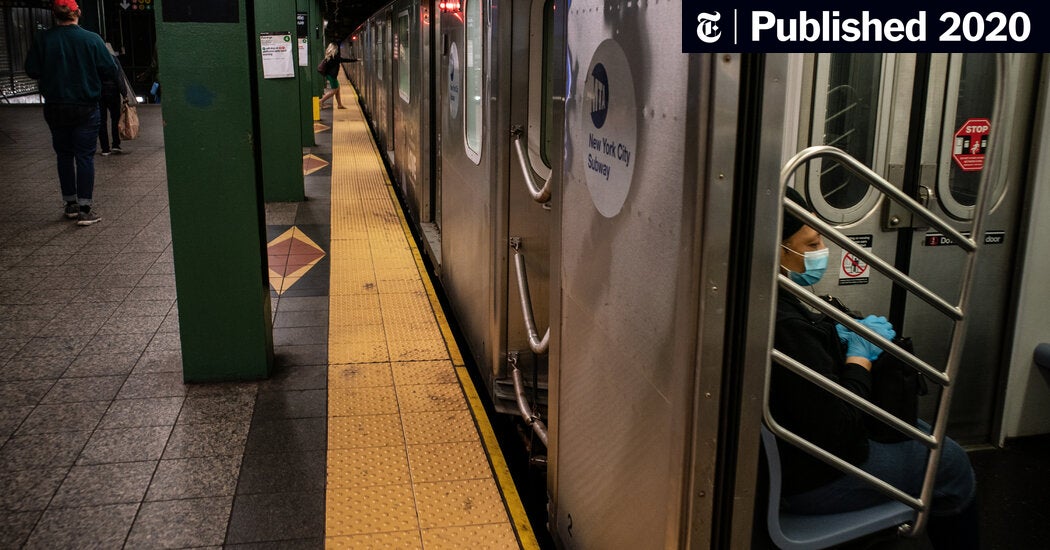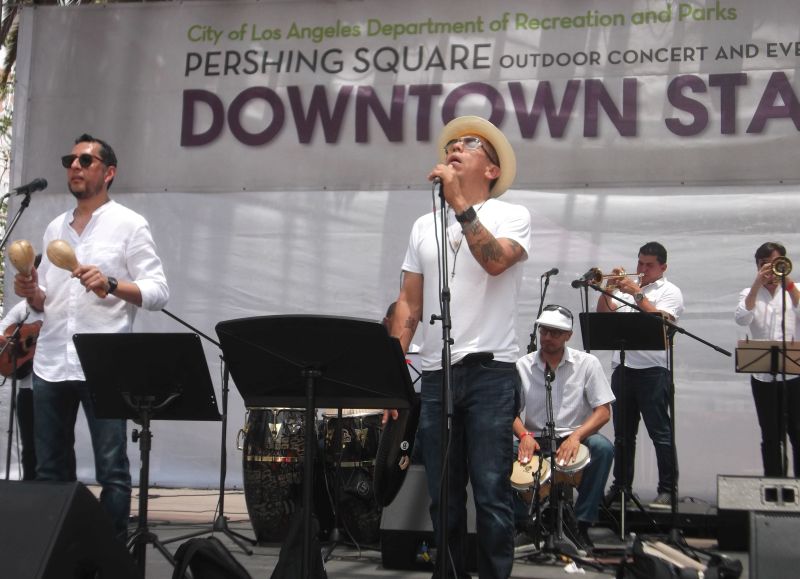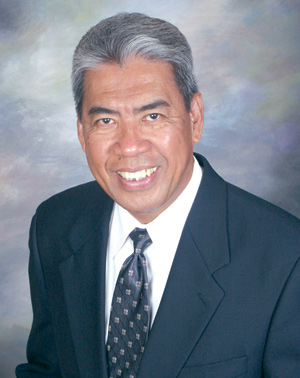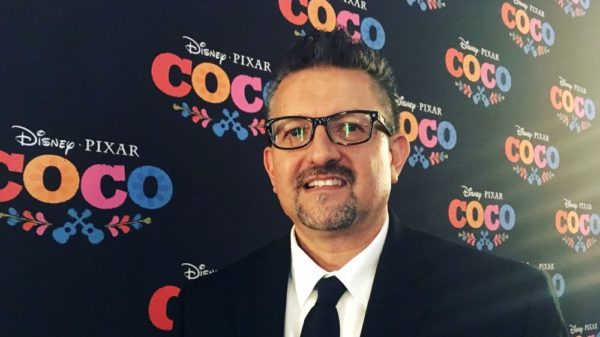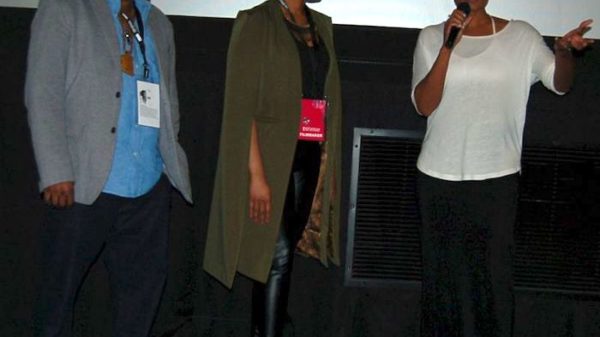Magazine, The Immigrant Experience
Public fears about using public transit have risen dramatically over the last 2 years, as stories about random — and sometimes fatal — attacks on passengers have been front-page news. The streets around public transportation are no safer. Women, seniors, people of color, and members of the disabled and LGBTQ+ communities are disproportionately the targets of such attacks and often find no recourse when they report such incidents to local law enforcement. An EMS briefing California state Senator David Min, who authored (SB) 434, ʻPublic Transit for All: Improving Safety & Increasing Ridership’ which was introduced in the Senate Feb. 13, Janice Li, Bay Area Rapid Transit Board PresidentPeter Kerre, Founder of Safe Walks NYC, discussed new legislation addressing the safety of public transportation and the streets, policies to ensure safety on public transport, and ground-level initiatives already in place. Esther Lee, who was attacked on the New York subway system also shared her story.
California state Senator David Min,
I was elected in 2020 to represent the 37th Senate District, which includes my home City or Irvine, and a good chunk of Orange County. About 20% of our population is made up of Asian and Pacific Islander Americans. I’m proud to be Vice-chair of the API legislative caucus and this bill was a no-brainer for me. I want to acknowledge also that Stop API hate was instrumental in developing this legislation. It is an important bill as we talk about public spaces and safety. As we talk about keeping people safe and Asian Americans at a time when so many of our seniors and women and others feel vulnerable in public spaces it is important that we take steps to make sure that our public spaces particularly, those that are under the jurisdiction of the government like public transit are safe for riders, and safe for vulnerable populations. And so what sp434 would do is require that California’s top 10 largest public transit systems would collect data from their passengers on the problem of harassment and uncomfortable behavior. And so this is a companion bill that we passed last year and that was originally meant to require the transit agencies to collect data and then develop solutions and implement solutions based on that data to try to make our public transit systems safer.
Because of the cost of that bill last year, we had to narrow it down. And so what we ended up doing was authorizing the Minetta Transportation Institute which is a well-respected nonpartisan think tank to develop a survey for use by the transit agencies. And that is what this bill this year is trying to do. Next is to authorize to acquire these transit agencies, actually take this survey that’s being developed right now by the minute, institute and start serving their riders because the problem right now is that we don’t know enough about harassment and assaults on public transit.
We know anecdotally it’s a problem but there’s a saying and I’m actually a former academic. I was a law professor before becoming a state senator and there’s a saying in academia that the plural of anecdote is not data. And so we need hard data at this point if we want to develop solutions. What this would do is give a voice to the millions of transit riders throughout the state of California, particularly, those who feel like they can’t freely, safely, and comfortably use public transit and start to put some numbers out there. Where does this happen? What types of populations are targeted? What are the types of instances that we’re seeing? And once we have that data, then we can start to use that data to develop solutions. Are there certain areas that need maybe more security, that maybe need better lighting? Do we need training for some of our employees on public transit? Do we need more personnel, we know that it’s a serious problem, but we just don’t know at this point how serious it is on public transit.
We know that of the roughly 11,500 hate incidents reported in 2021 and 2022 of anti-asian hate two-thirds of them involved harassment such as verbal or written hate speech or inappropriate gestures. We also know that other vulnerable communities, women and girls, people of color, disabled, and members of the LGBTQ community also feel unsafe in public spaces and in public transit, but again right now we just have anecdotal data. We don’t have real data and that’s what we need to do right now. So I don’t know that we think this bill will be an important step toward making public transit safer. We think it’s something that will end up more than paying for itself because we think at the end of the day one of the biggest reasons public transit is seeing a drop in its ridership, we know this from some of the surveys that have been done, is because people feel unsafe on public transit. I know there are some powerful brave people that are going to share their stories of harassment on public transit, but we need to make it safer. It’s something that we owe a duty to the public to do but it’s also something that I believe will increase ridership in public transit and that’s something that I very strongly believe in. So what I would ask of you is to ask that this bill moves forward and that we push hard as a community to try to make sure that my colleagues in the state senate and State Assembly, and then the governor that they recognize the importance of this bill and don’t end up narrowing it or canceling it or killing a bill because of the cost of it. It’s a very small cost at this point where we’re taking all steps to reduce the cost, but it’s such an important priority and it’s really an investment because if we can make public transit safer we know this will have a tremendous return on investment.
Janice Li, Bay Area Rapid Transit Board President
I am elected to the BART board. I represent the western side of San Francisco as one of nine board directors. I was unanimously elected by my colleagues in December to be this year’s board president. I also want to add that as a day job. I work at Chinese for affirmative action where I lead a local Coalition working to address anti-Asian American and Pacific Islander hate and violence through community-based Solutions.
So before I really focus on talking about safety at BART, I just want to give you a recognition that there are folks here that may not be familiar with Bart and the current state of our system.
Because of the pandemic and many other reasons, we have significantly fewer trips per day, the pandemic and also a much lower return to office rate here in San Francisco versus other major cities in the US. Pre-pandemic BART would provide something like 430,000 trips on an average weekday, which amounted to over 118 million rides per year.
We are currently at about 40% of our pre-pandemic ridership which matches the downtown San Francisco office occupancy rates. Our average rider has also changed, we have two-thirds of our ridership identifying as non-white a third are in households with income under 50,000 therefore low income, and 44% do not own a car and are therefore relying on BART as a method of transportation. So these are very very essential trips.
There are two major impacts that decrease ridership and as board president, my top two priorities are safety and our financial situation. And I know that that is absolutely true of BART’s leadership that we need to focus on safety and our finances. I know that this briefing today is focused on safety, but let me just touch very briefly about the financial situation. BART and public transit across the country are facing an existential crisis. BART, in particular, has historically been very fare dependent meaning that pre-pandemic 70% of our operating budget about a billion dollars a year was paid for by our fares. So our ridership dipped to 4% when shelter-in-place began in March 2020. We are currently at just 40% ridership. We will not continue to exist if we cannot find new revenue streams. So I just want to be real about this state of transit in this country.
Talking a little bit about safety, I was elected to BART in 2018 and in these past four years, we funded and created several new programs that are almost entirely focused on addressing safety and some sort of indirect but parallel concerns like homelessness, cleanliness, other such issues, and our main focus at BART has really been to increase presence and more uniform staff in all areas of our system, in our plazas, to our concourse level, inside the fare gates at our platforms and in our trains, riding our trains themselves. This safety presents the staff, they are trained, they are equipped with Narcan, they’re able to communicate directly with our police officers for serious emergency situations, and they’re very clearly representing themselves as BART. This presence includes BART elevator attendance. So at all hours of operation in our downtown stations, there is someone sitting in the elevator to ensure that it is a safe space for seniors, people with disabilities, parents with strollers, and others to use.
We also just reopened several of our underground bathrooms at all hours of operation. Those bathrooms are attended in one of our busiest stations. Having an attended bathroom, we have now received zero calls for service. Meaning, you know, people thought that they were going to be drug dens or people would be in them forever. That’s not been the case. They’ve been places for people to use as bathrooms. We also have piloted and established officially a BART ambassador program. These are non-sworn officers that are just riding the trains and at our platforms making sure that folks feel safe and can ask any questions. Certainly, when the pandemic hit and we had a mask mandate they were passing out masks and making sure people were wearing them correctly. And we also just a couple of years ago just passed and funded a crisis intervention team that allows staff who have social work backgrounds to specifically take the time and focus on engaging folks who are experiencing behavioral health, who might be under the influence of any substances, and who might be unhoused. These folks are able to connect folks to actual resources and do something that we call warm handoffs.
All of these teams of this new safety presence are forced multipliers for hours for foreign police officers. And you may wonder what can these safety personnel really do if they’re not officers. So I want to make 3 points here:
- first, I want to acknowledge that crimes do happen at BART, but they are rare. BART police reported that our crimes per million trips, which is how the Federal Transit Administration asks us to report dropped to a low of 7.45 crimes per million trips. And when crimes do occur the more presence we have in the system the quicker we’re able to help those victims immediately and get the police on this on the scene right away. I will also add that some of the more serious crimes are often situations that originate outside of our system. For example, there were two homicides at our 24th Street Mission Station last year. Unfortunately a very very rare situation both times. They were conflicts that have been in the neighborhood at the street level where the victims ended up escaping into our underground system.
- Second many of the situations that make people feel unsafe are not criminal. As we know across our country the rising cost of living wages, the national mental health crisis, and the spread of fentanyl are some of the main causes of our homeless crisis. We feel this homeless crisis very acutely in San Francisco. But being homeless is not a crime and my position and the majority position of the BART board is to not make being poor or being homeless a crime, the premise of unhoused photos taking shelter apart does make some riders feel unsafe and what we need are those ambassadors, those s, services those social workers who are able to take the time and make those warm handoffs to actual resources that help people exit from homelessness.
- And then my third point here as I know, a centerman had noted, Stop API hate, learned an overwhelming number of the self-reported instances they receive are non-physical harassment. The most recent numbers from San Francisco covering March 2020 to March 2022 show that 64% of these incidents are verbal harassment and that a majority happened in public spaces including public transit, but these are not criminal activities and they are not emergency situations that police officers would respond to but they make me feel unsafe; the verbal harassment. They make BART riders feel unsafe and they may make people change their behaviors to either avoid riding public transit entirely or even not go out in public as regularly as they would.
At BART we believe that having a more uniform safety presence will prevent these incidents of harassment from occurring and BART’s safety presence would be able to intervene so that such incidents, such as verbal harassment do not escalate further into violence or criminal behavior.
Esther Lee, who was attacked on the New York subway system
My name is Esther Lee and I’m 46 years old. I have been an educator for over 20 years and am a long-time resident of New York City. I am the proud daughter of Korean immigrants who moved to Brazil in the 70s and again to the United States in the early 90s.
As a Korean American woman, I have been dismayed by the increase in hate crimes against the AAPI community nationwide.
She never thought she would be targeted while riding public transportation in the city she called home. She showed a video of her attack and shared the following:
“I was rushing home from work to attend a zoom meeting.
Immediately after taking a seat the man who you saw in the video unmasked and wearing a hot pink hoodie raised his fisted hand to my face asking me for a fist bump. Even after ignoring him, the man persisted. I turned to him and politely said sir, please don’t touch me or engage with me. I am not interested. It was clearly not the answer this man wanted because he grew irate. While aggressively yelling at me that I was a bitch for not accepting his niceties, I felt unsafe. I moved away from him and as I got up and stood against the wall inside this moving train I began to film the incident on my phone. It was about 56-57 seconds long when I was accosted by this man and I had nowhere to go. As you can hear from the recording he yells kiss my ass. Suck my dick while grabbing his genitals as we approached 40 seconds street. He yells who would want to touch you you fucking carrier. And proceeded to spit on me twice ensuring his vitriol and hatred landed on my person. As soon as the train stopped on 42nd Street, I quickly moved away from him. None of the bystanders as you saw helped me as I moved to another car. As the train began to move again, I distinctly remembered feeling violated and angry. I was shocked and this had to be reported. I exited the train on 59th Street remembering that there is a police precinct located inside that station. As I sat down to write my personal statement, the lieutenant on duty Dewan pursued and asked me if the man hurled an Asian slur. I told him that although I was not called a chink forgive me if that offends people, the man had in fact called me a carrier a clear reference to the covid pandemic and the recent rise of API hate. Dewan conducted a curbside trial and immediately dismissed my case as a hate crime because the perpetrator did not use an Asian slur. Not knowing how the precinct was going to officially label my case I continued to write my statement and was instructed to call within a week to retrieve my number so that I could follow up. Two weeks after the incident I discovered the precinct labeled my case harassment rather than hate crime. As I called and had the report read to me over the phone, I also discovered that the precinct failed to include that I was called a carrier even though I included it in my initial statement and had video footage proving as much. By mid-October, I spoke to Dewan personally over the phone and he refused to amend my case, continuously stating, I was not a hate crime victim because the perpetrator did not call me an Asian carrier. I asked if he would at least amend the body of my report to include that I was called a carrier and he refused. Wanting to be heard and hoping for a different outcome, I was able to reach the Deputy inspector of New York, True Crimes Unit, Jessica Corey on October 27th. Hoping for a proper investigation, Corey reached out to me that evening stating, I was not a hate crime victim because I sat next to the perpetrator and I probably escalated a situation where a man was just being nice by recording him on my phone. Feeling victim shamed, I thought I reached the end of my journey when in December, I was notified by a civilian review panel that my case was labeled a hate crime. That was when I went public with my story with Siff on Kim of ABC 7 News and thanks to his reporting, Mayor Eric Adams heard about my case and reassigned Jessica Corey from New York, True Crimes Unit.
Going public with my story was not about finding the perpetrator, Michael Aldridge. I wanted to go public with my story to bring attention to the improper mishandling of cases within the AAPI community. In fact, it became clear to me that the NYPD an agency like any other law enforcement agency in our country ordered to protect and serve our communities failed to at least properly investigate my case. If cases like mine were not being labeled as a hate crime, that meant that many more similar incidents were being mislabeled and dismissed. Clearly, the stats on Asian hate crimes we are aware of are actually inaccurate. The reality is that incidents like mine take place more often in public transportation and on the street than incidents of great tragedy such as Michelle Go and Christina Yuna Lee. With the immediate dismissal of a situation that deserves proper investigation, you are led to believe that unless you come to great physical harm the system that law enforcement is built upon is unable to serve you. This perpetuates the unfortunate reality of why women like me who are harassed and attacked do not report their cases.
As I began to go public with my story, my 81-year-old mother expressed concern for my safety and her concern helped focus my activism. How often did my parents’ immigrant struggle to earn a living in this country where their otherness was mocked dismissed and belittled continuously accept this abuse knowing that they could not fight back? My parents represent the larger AAPI community, one that is targeted and constantly reminded that they do not belong here. Our voices are not important enough to demand change and our identities are better served. If we keep our heads down and stay silent within the model minority paradigm, every attack on the Asian elderly or an Asian woman is felt by the AAPI community. I hope that by bringing attention to the way law enforcement labels and conducts possible hate crime investigations, we can bring real changes to the system ensuring not only the safety of every member of the API community but of others as well. That is why the introduction of the sb434 bill by Senator Dave Min is a much-needed part of the solution along with the SBE 1161 bill, which was passed in September 2022. We cannot work together on solutions to a problem unless we gather accurate information, identify where issues may be addressed, and validate the voice of those impacted. This is about safety for all ”
Peter Kerre, Founder of Safe Walks NYC
And thank you ethnic Media Group for inviting me to speak with you, Esther. You know, it’s so horrific. Seeing your video and that video itself pretty much is the perfect example of why Safe Walks responded and pretty much everything Esther has said. Everything I’m about to say right now will be pretty much similar to what she has mentioned about the situation out here in New York City.
We formed Safe Walks in January 2021 after an increase in women using the subway system out here in New York City. We began in Brooklyn and what I found concerning was that despite a spike in attacks against women which are extremely horrific. There seems to be no public interest. It wasn’t really being amplified by the media that much and law enforcement wasn’t even addressing it at all. And so one day I was just sitting in my apartment here and I thought to myself that, you know, this is horrific, you know, let me try to do something because I have a sister who lives in Bushwick who commutes as well and I just felt that we were failing ladies in New York City, especially those of us who had the privilege to be able to do something about it. So I jumped on my bike, rode this subway station, and just offered to be a presence for anyone who felt unsafe. And what instantly caught my attention is that despite four brutal attacks at that subway station, there was no police presence. There wasn’t even a single sign warning ladies or warning the nearby community that the area was unsafe. What I was doing to the greater community enabled our activities to go viral pretty fast and we soon had several residents from around New York City volunteering to be a presence for those who felt unsafe and who felt vulnerable. And one thing I want to point out is that we made this purposely as simple as possible. So as to try and Inspire more people to join and be part of a similar effort, we made it clear and we always make it clear. We are not a vigilante. We are your neighbors who are simply offering our presence to you because one thing we noticed as well is that most times attacks happened in most cases the victims were alone. So simply having an extra person with you will make a very big difference and so we’ve been doing that as well as accompanying some requesters on some way trips if they feel unsafe. And one thing we immediately noticed as soon as we hit the streets is that we were dealing with a massive intersection of different crises at the same time; mental health crises, social economic crises due to, of course, employment and financial difficulties, and racial crises. Hate crimes and all the attacks that are based on ethnicity are mainly targeted toward the APA community. And fourth the biggest one, the elephant in the room, a breakdown and trust between law enforcement and the community. Don’t forget that this was all at the time. We’re just coming out of the pandemic, but the country was still allowed to watch what had happened with George Floyd, and many more people from minority communities were speaking out on the interactions with police. So that trust was fully being, restored yet to this point.
But back to the main point we’re dealing with this intersecting crisis. We tried to present these to our elected leaders here in New York City but were unsuccessful. The leaders have always been very present whenever a major attack happens. And the messaging has been very narrow and focused on specifically giving out messaging heading towards an increase in policing as being a solution to the fear that New Yorkers have when it comes to using public transit. And that has not worked out at all because there are again many different things at play here. Late last year our governor Kathy Hochul and Mayor Eric Adams introduced an initiative called, Cops, Cameras, and Care which they’ve been really speaking about heavily and that includes flooding the New York Subway system with a massive police presence, increasing surveillance cameras, and extracting the unhoused and folks from the transit system. But there’s been no indication of what’s being done with them once extracted because many times they end up back within the subway system. But there was no addressing of community relations between the NYPD and New Yorkers. There’s been no addressing as to major concerns raised by ladies and as Esther very clearly and I’ve noted as well that the police are very dismissive towards women, many times victim shaming them and overall dismissive towards things. They consider minor infractions, and many times they do not even show up at all and when they do show up, if it’s something they feel is a minor infraction then they will let you know, and they will not hide their anger, and you are a victim, so that is a big problem that has not been addressed. This is something that can only be adjusted by a government or agency. This is a crisis too large for any individual organization to be able to handle. But they have to show us that they’re interested in bringing about this change. one thing I want to point out as well is, the MTA does not collect any data on ridership, ethnicity, or gender. So when you see the mayor and other officials give public press announcements no one is keeping in mind minority communities. How do the APPI Community feel, are they really riding the trains more? Or other minority communities and it’s not happening the ladies still, you know feel unsafe about this. So we would love a similar bill to be passed in New York City requiring them to collect this data. That would be extremely helpful and also to be made public as well so that way we can hold them accountable and ask them to act on the data. Another thing we noticed as well is that employers in New York City are not making accommodations for ladies who feel unsafe. I can’t tell you how hurtful it feels every time I’m gonna say for, and speak to some of the ladies who mentioned the insensitivity of the employers when they ask for accommodations. Think such ignorant things like oh, well, I went to the club last week and I saw many Asians at the club at the bar. So that means agents must not feel unsafe any more. You know such insensitive statements or assumptions. Employers, we would really love our elected leaders to push legislation requiring employers instead of New York City to provide accommodations for employees who feel unsafe using public transit. We would hope that they would do that out of a good heart, but apparently not happening. So that’s one thing we hope is to push through. Last but not least, again the elephant in the room is flooding law enforcement into the subway system is not a solution in New York City. For starters, they’re not trained. NYPD is still not trained on how to interact with residents, especially minorities and women, second bear in mind all the recent things happening in this country. The presence of law enforcement is actually a trigger for many people who have been in situations whereby they have had negative interactions with the police that might actually trigger more violence or more unrest. So, it’s very nuanced, the many different things that are at play here, but we feel that in NYPD or that our elected leaders are not addressing one major elephant in the room, which is law enforcement and its relationship with New York City residents. We feel that employers aren’t doing enough to make accommodations for them using public transit, and we would want data on the ridership to be collected as well and made public so that we can push for change in that area.

